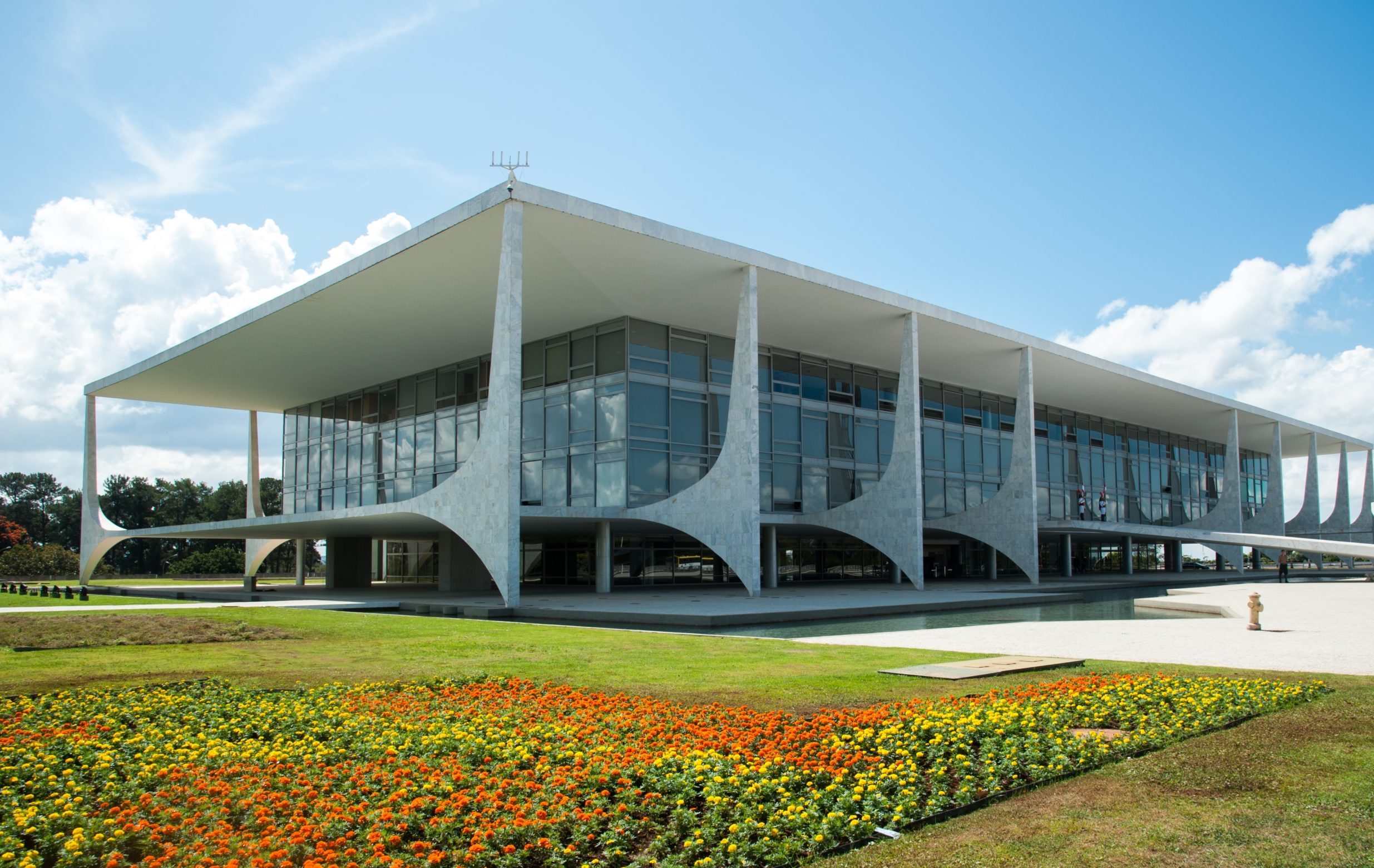Sifting Through the Wreckage of Modernism
Modernist architecture replaces beauty with a nebulous call for change.

Architecture matters. It narrates our cultural history and shapes us as humans. Intellectuals in Britain understand this, in their way, and have raised aesthetic objections to the transformation of the nation’s cities. It is necessary, in the context of these objections, to clarify the philosophical roots of architectural modernism and its relationship to ugliness.
Modernism is driven by a bitter hatred of the world of yesterday. Men like Walter Gropius and Ludwig Mies van der Rohe of the Bauhaus movement wanted a radical break with tradition, a fundamental upheaval of European civilization. In their view, Europe had led the world into corruption and lost the right to survive unchanged after the First World War. They wanted nothing less than an architectural revolution.
They and other forerunners of modernism were social engineers, serious men with the will to rule and change. They sought to ban symbols of old-fashioned vanity and decadence. The revolution they sought would eradicate bourgeois fondness for ornaments and lyres. They frequently invoked architects and artists who, in a spirit of “equality” and “fraternity,” strove to put an end to falsehood in order to lay the foundation for something completely new. On top of the bloody battlefields of Europe, they sought to build a unified culture of the future, cleansed of all traces of past sin.
Modernist architecture therefore is often condemned as "ugly" by traditionalists such as the British author and columnist Sir Simon David Jenkins, the late British philosopher Sir Roger Vernon Scruton, and the Belgian architect Leon Krier. But the term "ugly" is misleading. Modernism is offensive to historical norms and the aesthetic traditions of culture, but it is not always unattractive; modernist-utopian city plans like Le Corbusier's, for example, can hardly be considered ugly.
It may be helpful to think of modernist architecture as a bland prison wall. It is nothing. It has nothing at its heart; it has no soul. It is inorganic and impersonal, and expresses the same suffocating emptiness as a barren desert landscape. It conveys no memory, no desire, and no hope. It denies all of man’s motifs, even those derived from plants and animals, and does nothing to nourish man's pursuit of the beautiful. Modernist buildings seem artificially transplanted to the world of humans. They express something alien, if not downright hostile, to humanity.
We love people in a concrete way. Modernist buildings impose upon us something abstract. There is no true love, intimacy, or fidelity in the angles and curves of the solipsistic idiom. Wherever modernist buildings spring up, they stand in the way of beauty, casting long shadows and impoverishing the cultural landscape. They do not enrich the long tale of human dignity and fidelity, but steal from it. This applies whether they take the place of other buildings, which is a tragedy unfolding in the North American cities, where the damage is extensive and irreversible (such as the loss of the iconic Pennsylvania Station in New York), or as colonialist satellites spread over virgin land as at the founding of the Brazilian capital in the middle of the jungle. These buildings are nothing in themselves, not worth considering from the outside; there is neither beauty nor ugliness.
Truly ugly architecture tends to distort the well-known, harmonious idiom. Consider, for example, the disproportionate elements from the pompous revivalism in Europe and North America. Garbled orders of columns or swelling ornaments from bottom to top can be repulsive in the same way as the sight of a deformed creature.
Beautiful architecture evokes pleasure and not only invites an admiring glance in passing but a lingering stare. It requires harmony between the elements. And just as a person's face can express over-refinement caused by inbreeding—think of the conspicuous underhung jaw found in several European princely families—the artifacts of culture and architecture, like Gothic cobwebs of ribs and buttresses, can show signs of over-maturity.
Modernist architecture displaces beauty as an ideal. Instead of organically inspired buildings, where the vernacular idiom is integrated with the monumental, the modernist-trained architect produces "apparatuses" (or "machines," as Le Corbusier himself expressed it) for various functions, depending on market supply and demand. Thus, a villa or a high-rise building intended for many homes becomes a "residential apparatus.” A theater becomes a "theater apparatus." A town hall becomes a "town-hall apparatus.” And so on. All of the architect's "apparatuses” can be designed with concrete, steel, and glass as grotesquely dimensioned containers, kitchen utensils, or scaffolding.
Subscribe Today
Get daily emails in your inbox
Where architecture in the classical sense—seeking beauty in the built environment with eternity in mind—has moved out, "apparatus architecture" has moved in. It creates nothing for posterity, nothing at all of true value, but revolves around the pursuit of power: the subjugation of culture, fame in narrow professional circles, and money. This “architectural machinism” is a means for the pessimist to see the decay and collapse of culture. Like the prison wall, it is a shadow of beauty. Street by street and city by city, it conquers the public square.
Contemporary architectural aesthetics are dispiriting and call for change. The architects of our time have given up building for humanity and tomorrow's children, as once was customary. With no regard for those who came before us and those who shall come after, they form a closed and self-referential guild. Like an all-consuming firestorm, their work has ravaged Europe and North America.
For 100 years, modernist architects and their architecture have crowded out classical aesthetics. We must end their rule. They, after all, killed beauty—and the idea of man as a beauty-seeking creature.